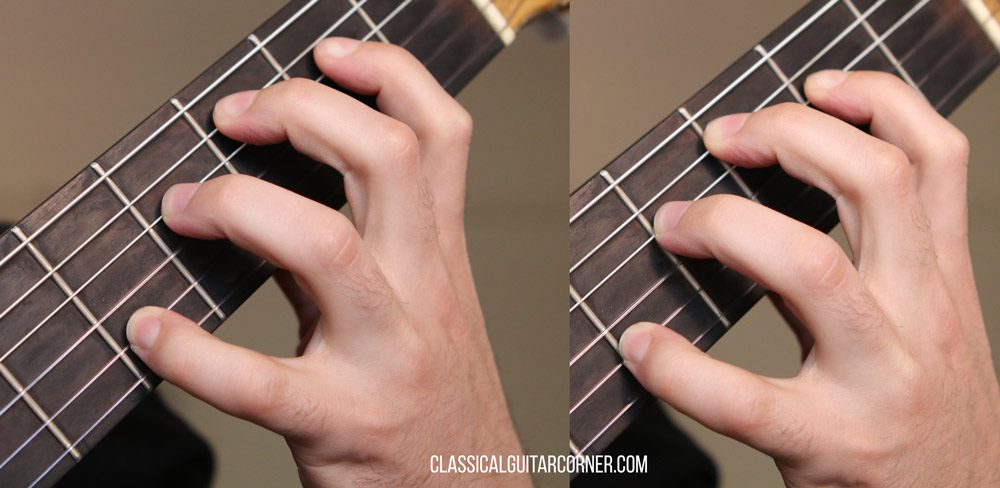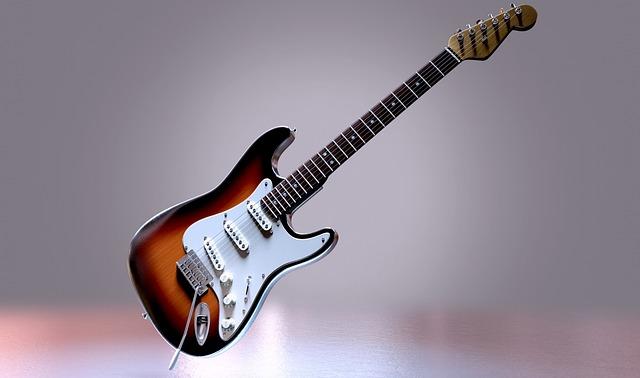Welcome to the Wild World of Major Scales on the Guitar Fretboard – where notes and numbers collide in a tangled mess of strings and frets. Mastering these bad boys can seem like a daunting task, but fear not my fellow guitar enthusiasts, for I am here to guide you through the chaos with a healthy dose of humor and a sprinkle of wit. So grab your ax, tune those strings, and let’s dive headfirst into the magical world of major scales on the guitar fretboard. Let the musical madness begin!
Contents
- 1 Understanding the Structure of Major Scales
- 2 Exploring the Fretboard: Navigation Techniques
- 3 Position Playing vs. Three-Note-Per-String Scales
- 4 Incorporating Muscle Memory Through Practice Routines
- 5 Applying Major Scales to Music Theory Concepts
- 6 Mastering the CAGED System for Scale Visualization
- 7 Expanding Your Musical Vocabulary with Scale Modes
- 8 FAQs
- 9 Happy Scaling!
Understanding the Structure of Major Scales
Major scales are like the building blocks of music theory. They are made up of a pattern of whole steps and half steps that give each scale its unique sound. is crucial for any musician looking to master their craft.
One important thing to know about major scales is that they follow a specific formula. This formula consists of whole steps and half steps arranged in a specific order. The pattern for major scales is: whole step, whole step, half step, whole step, whole step, whole step, half step.
When you play a major scale starting on any note, you are essentially following this pattern of whole steps and half steps. This allows you to easily play major scales in any key once you have mastered the formula.
So, the next time you pick up your instrument, take some time to practice playing major scales in different keys. By , you will be well on your way to becoming a musical genius!
While navigating the fretboard can seem like a daunting task, there are a variety of techniques that can help make it easier and more enjoyable. One approach is to break the fretboard down into smaller sections, much like a treasure map with hidden gems waiting to be discovered. By exploring each section one at a time, you can gradually build your familiarity and confidence with the fretboard.
Another fun technique is to use visual markers to guide your way. Imagine each fret as a different stop on a fantastical journey through a mysterious forest, with the strings acting as winding paths and trails to explore. By mentally mapping out your route, you can more easily navigate the fretboard with ease and precision.
Don’t forget to utilize your sense of touch as well! Take advantage of the unique textures of the frets and strings to help guide your fingers along the fretboard. Just like reading braille, you can feel your way around the fretboard and discover new sounds and patterns along the way.
So grab your trusty guitar and embark on an exciting adventure through the fretboard! With a bit of creativity and imagination, you’ll soon be breezing through scales and chords like a seasoned explorer of the musical world.

Position Playing vs. Three-Note-Per-String Scales
So, you’ve been struggling with deciding whether you should focus on position playing or three-note-per-string scales in your guitar practice sessions. Well, fear not, fellow guitarist, for I am here to shed some light on this age-old dilemma.
Let’s start with position playing. It’s like navigating through a labyrinth of frets, finding your way around each position on the fretboard. It’s all about knowing where your fingers should land to produce those sweet, sweet melodies. It’s like solving a musical puzzle with your fingertips, one position at a time.
On the other hand, we have three-note-per-string scales. Imagine running your fingers through a musical staircase, each string representing a step towards fretboard glory. It’s like a never-ending climb towards guitar enlightenment, where every three-note sequence propels you further up the fretboard ladder.
So, which path will you choose? Will you master the art of position playing, or will you conquer the three-note-per-string scales? Whichever road you take, just remember – the journey to guitar greatness is paved with practice, patience, and a healthy dose of rock ‘n’ roll attitude. Now, go forth and strum your way to fretboard fame!

Incorporating Muscle Memory Through Practice Routines
So you think you can just pick up a guitar and become a rock star overnight? Think again! is key to mastering any skill, especially when it comes to playing an instrument.
One way to build muscle memory is through consistency. Practice makes perfect, as they say! Set aside dedicated time each day to strum those chords or pluck those strings. Don’t worry, your fingers will thank you later.
Another trick is to break down complex pieces into smaller, more manageable parts. **Chunking** is not just for chocolate chip cookies. By focusing on one section at a time, you can slowly build up muscle memory and master that killer guitar solo.
And don’t forget to mix it up! Variety is the spice of life, and the key to keeping your muscle memory on its toes. Try different practice routines, experiment with new techniques, and before you know it, you’ll be shredding like a pro!

Applying Major Scales to Music Theory Concepts
So you think you’ve mastered major scales, huh? Well, get ready to take your music theory knowledge to the next level by applying those major scales to some key concepts. Don’t worry, we’ll make it as easy as playing a middle C.
First up, let’s talk about harmony. Major scales are the building blocks of harmony, so understanding how they work together is key. Use your major scales to construct chords and progressions that will have your audience begging for an encore.
Next, let’s dive into the world of melody. Major scales provide the framework for creating catchy and memorable melodies that will have everyone humming along. Experiment with different intervals and rhythms to really make your melodies sing.
And finally, let’s not forget about modulation. Major scales allow you to smoothly transition between different keys, adding interest and complexity to your compositions. So go ahead, throw in a key change or two and impress your listeners with your musical prowess.
Mastering the CAGED System for Scale Visualization
So, you want to master the CAGED System for Scale Visualization, eh? Well, hold on to your guitar picks because I’m about to blow your mind with some seriously cool tips.
First things first, make sure you have your CAGED shapes memorized like the lyrics to your favorite song. These shapes are the building blocks for all your scales and solos, so don’t be caught slacking!
Next, start connecting those shapes like a mad scientist creating a musical Frankenstein. Link them together in different positions up and down the fretboard to really expand your playing options. It’s like creating a spider web of musical awesomeness.
And don’t forget to experiment with different scale patterns within each shape. Mix it up like a mad chef adding spices to a dish – you never know what delicious musical flavors you’ll cook up!
Expanding Your Musical Vocabulary with Scale Modes
So, you’ve been jamming out on your guitar for a while now, sticking to the same old major and minor scales. Well, my friend, it’s time to level up your musical game and expand your vocabulary with some scale modes!
Imagine your musical repertoire as a delicious buffet, with major and minor scales being the basic meat and potatoes. Scale modes are like the exotic spices and sides that can add that extra kick to your playing. They’ll take your listeners on a journey through different flavors and textures, leaving them craving more.
Don’t be afraid to venture into the world of scale modes – it’s like discovering a hidden treasure chest full of musical gems. Embrace the challenge and let your fingers dance across the fretboard in ways you never thought possible.
Whether you’re a seasoned musician or just starting out, incorporating scale modes into your playing will elevate your skills to a whole new level. So, grab your instrument, buckle up, and get ready to embark on a musical adventure that will leave you feeling like a rockstar!
FAQs
Why are major scales important for guitar players to learn?
Well, if you want to impress your friends by shredding like a rock star, major scales are the foundation of understanding music theory and building your technique. Plus, they sound pretty darn good too!
How can I start mastering major scales on the guitar fretboard?
First things first, grab your guitar and start practicing those scales! Learn the patterns and sequences on the fretboard, and don’t forget to practice slowly and accurately to build muscle memory.
What are some tips for memorizing major scales on the guitar?
One word: repetition. Repeat those scales over and over until they’re ingrained in your brain. You can also try visualizing the patterns on the fretboard in your mind, or even labeling the notes as you play them.
Can I use major scales in different genres of music?
Absolutely! Major scales are like the Swiss Army knife of music—they can be used in rock, jazz, blues, country, you name it. Experiment with different styles and see how major scales can spice up your playing.
How can I make practicing major scales more fun and engaging?
Get creative! Try playing along with backing tracks, jamming with other musicians, or even adding in some fancy techniques like bends and slides to your scale practice. The key is to keep it interesting and enjoyable!
Happy Scaling!
Congratulations on conquering the major scales on the guitar fretboard! Now that you’ve mastered this essential skill, you’re one step closer to becoming a guitar virtuoso. Keep practicing, keep shredding, and keep rocking out. Remember, the scales are just the beginning – there’s a whole world of musical possibilities waiting for you to explore. So grab your guitar, unleash your inner rockstar, and let the music take you on a wild ride. Happy scaling, and may your fingers always find the right notes!



